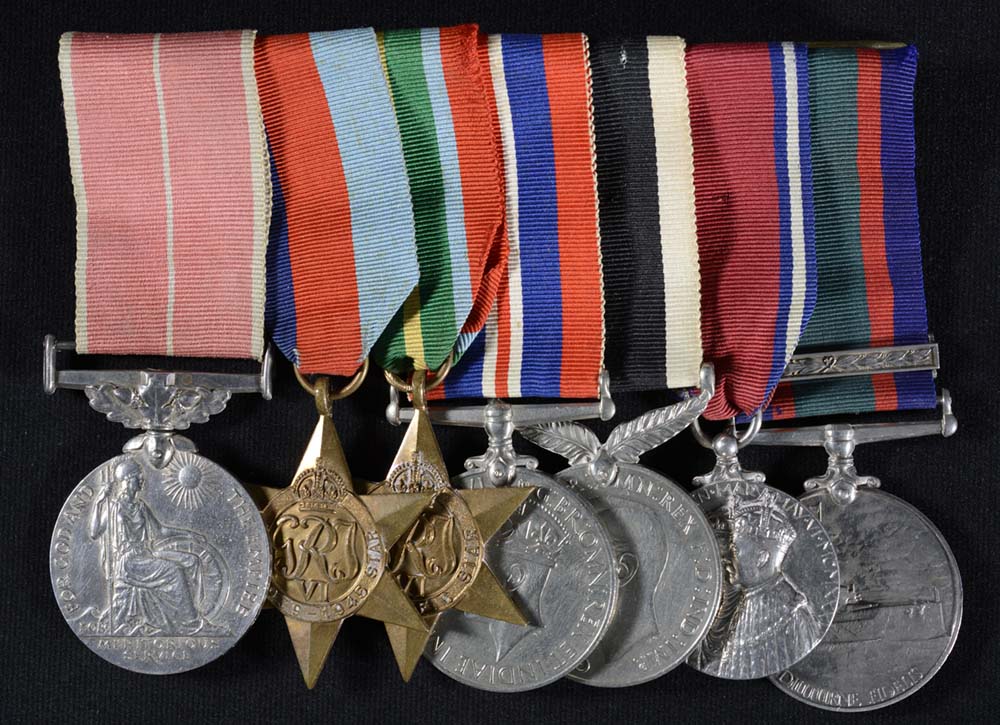

Display No. 10G
SPARKE, Kennedy Welton
Kennedy Sparke joined the Wellington Division of the Royal Naval Volunteer Reserve in 1928 as an Ordinary Seaman. He went to sea occasionally in ships of the New Zealand Division of the Royal Navy and was awarded his Royal Naval Reserve Long Service and Good Conduct medal in 1938.
At the outbreak of the Second World War, Sparke was mobilised and posted to HMS Philomel. Attached to Philomel he served in the minesweeper HMS James Cosgrove. In April 1941 Sparke was assigned to the minesweeper HMNZS Gale, part of the 25th Minesweeping Flotilla sweeping for German mines in the Hauraki Gulf. In December 1941 Sparke went to Fiji with Gale. The ship returned for refit in February 1942. In June of that year, Sparke went with Gale to New Caledonia for port minesweeping duties under United States Navy command. Gale returned to New Zealand in October 1942 and was assigned to minesweeping duties in Wellington. In February 1943, Sparke was posted with Gale to Tulagi in the Solomon Islands where Gale undertook night-time patrol and escort duties. Sparke returned to New Zealand in June 1944 and was posted to the minesweeper HMNZS Tui while the ship was back in New Zealand for refit. Sparke then spent a year attached to Philomel, before spending the last six months of his war service posted in the minesweeper HMNZS Claymore. Sparke was discharged in 1945 and was awarded a British Empire Medal (BEM) in the 1946 New Year’s Honours List.
Awarded medal(s)
Medal Description [Left to Right]:
The British Empire Medal
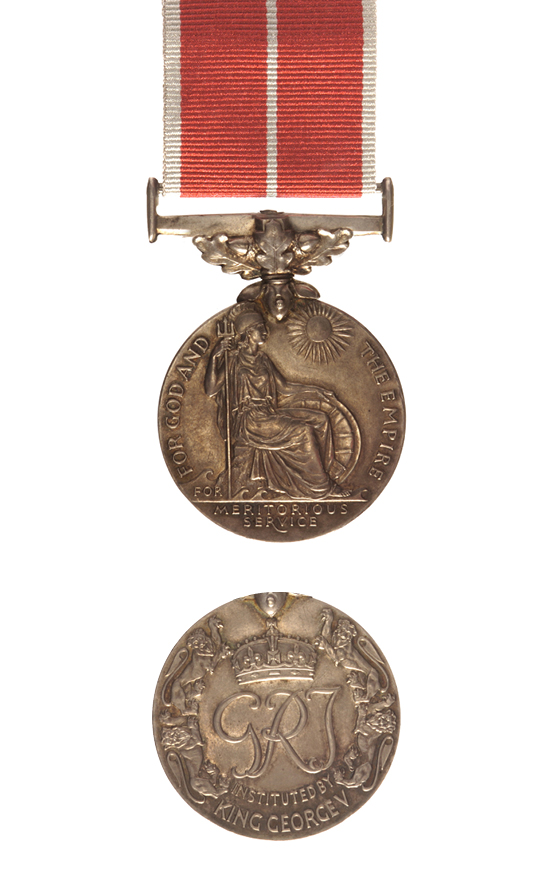
Instituted in 1922 as the lowest level of the Order of the British Empire. In New Zealand it was awarded to non-commissioned officer’s (NCOs) for meritorious service until 1995 and for gallantry between 1957 and 1974.
The 1939-1945 Star
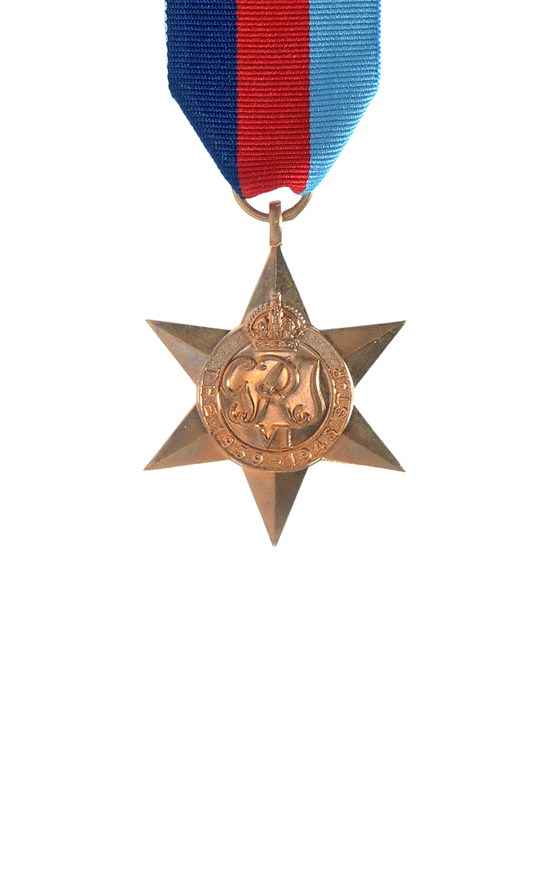
The 1939-45 Star is the first in a series of eight campaign stars instituted in 1945 to recognise service in World War Two. The ribbon has three equal vertical stripes of dark blue, red and light blue. The dark blue stripe symbolises the service of the Navy and the Merchant Navy, the red stripe symbolises the service of the Army, and the light blue stripe symbolises the service of the Air Force. The equal width bands represent the equal contributions of the three service arms towards victory. The ribbon was devised by King George VI. Two clasps could be awarded with this medal: ‘Battle of Britain’ and ‘Bomber Command’. Only aircrew would qualify for these clasps although a small number of Fleet Air Arm naval pilots flew for the air force and would be eligible for the ‘Battle of Britain’ clasp.
The Pacific Star
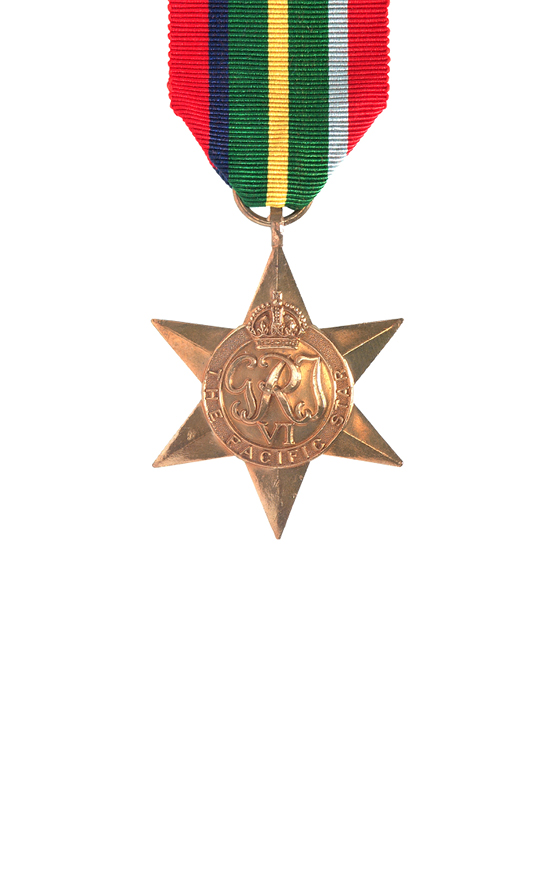
The Pacific Star was awarded in the Second World War for operational service in the Pacific between 8 December 1941 and 2 September 1945. This medal was also awarded for certain specified service in China, Hong Kong, Malaya and Sumatra: between 8 December 1941 and 25 December 1941 (for Hong Kong); between 8 December 1941 and 15 February 1942 (for China and Malaya); and between 8 December 1941 and 23 March 1942 (for Sumatra). The centre of the ribbon is dark green (symbolising the jungle) with a central yellow stripe (symbolising the beaches). On the outer edges are wide stripes of red (representing the Army), with narrow stripes of dark blue and light blue (representing the Navy and Air Force) between the stripes of dark green and red. A ‘Burma’ clasp could be awarded with this medal. Personnel qualifying for both the Pacific and Burma Stars were awarded the first star but only a clasp in respect of the second.
The War Medal 1939-1945

The War Medal 1939-45 was awarded across the British Commonwealth to all full-time members of the Armed Forces in the Second World War for 28 days service between 3 September 1939 and 2 September 1945, irrespective of where they were serving. The ribbon is the red, white, and blue of the (British) Union Flag. There is a narrow central red stripe with a narrow white stripe on either side. There are broad red stripes at either edge, the two intervening stripes being blue.
A bronze oak leaf on the medal ribbon denotes that the recipient was Mentioned in Despatches. To be Mentioned in Despatches a member of the armed forces had their name mentioned in an official report, written by a superior officer, and sent to a higher command. The report would describe the individual’s gallant or meritorious action in the face of the enemy.
The New Zealand War Service Medal
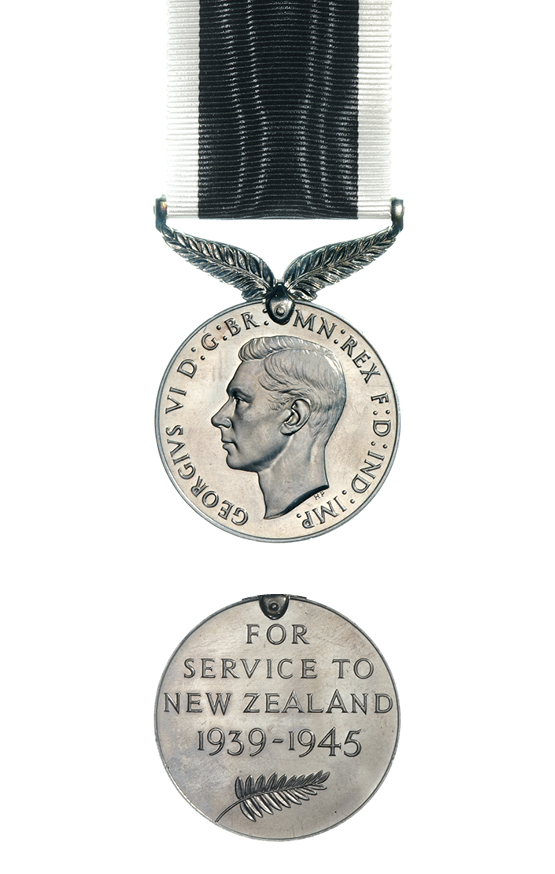
The New Zealand War Service Medal was awarded for 28 days’ full time service or six months’ part time service in the Second World War in any of the New Zealand Armed Forces including the Reserves, Naval Auxiliary Patrol Service, or Home Guard, between 3 September 1939 and 2 September 1945.
Jubilee Medal 1935
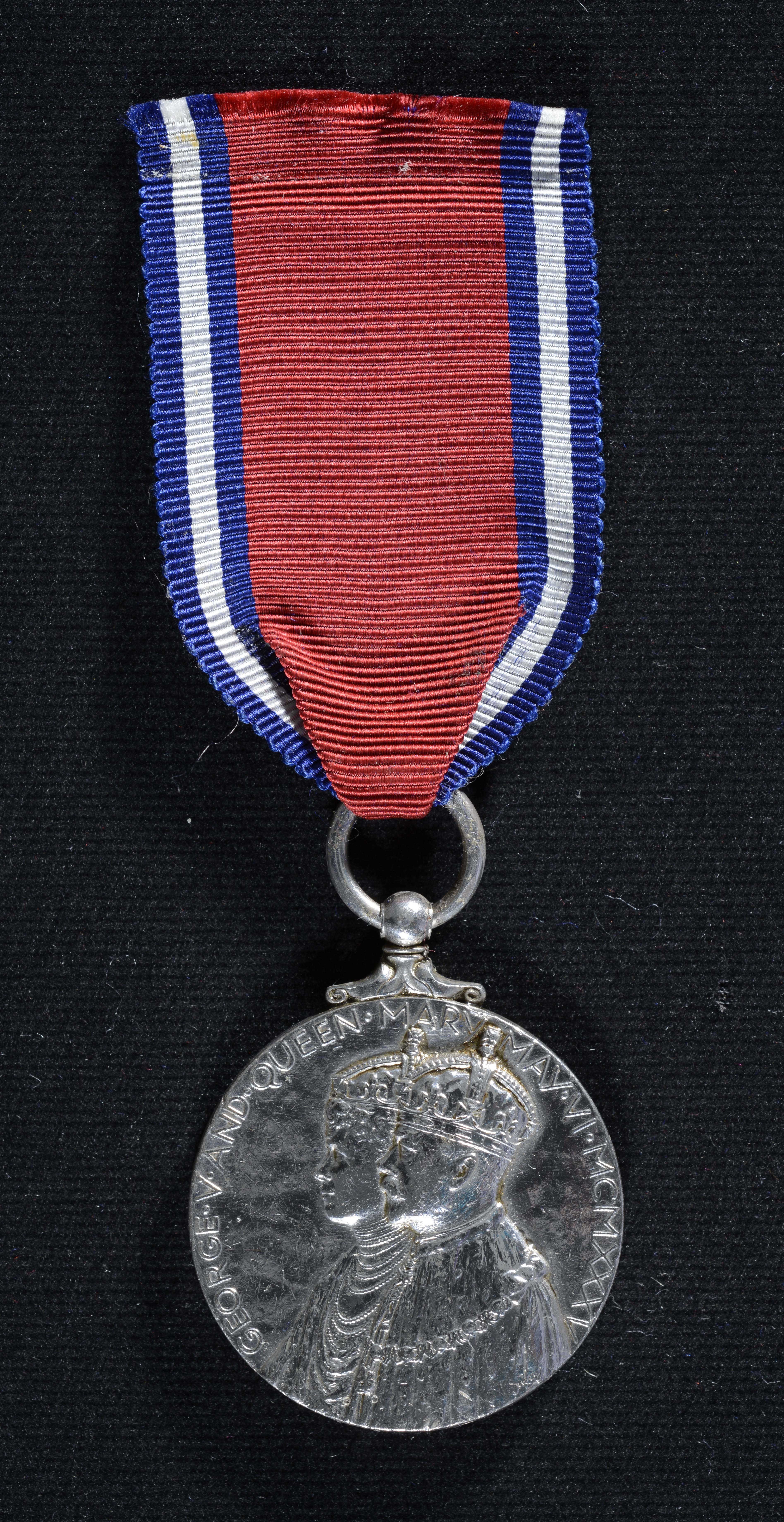
A commemorative medal instituted to celebrate the 25th anniversary of the accession of King George V.
Royal Naval Volunteer Reserve Long Service and Good Conduct Medal

A long service medal awarded to members of the Royal Naval Volunteer Reserve (RNVR). Established in 1909, the medal was awarded to petty officers and ratings who had served 12 or 15 years; war service counting double. The original medal was the same as that of the Royal Naval Reserve (RNR) long service medal with a plain green ribbon. In 1919 a new ribbon was introduced for the RNVR medal: blue edges with a wide central green stripe between narrow crimson stripes.
The same medal and ribbon was also issued to the Royal Naval Wireless Auxiliary Reserve from 1939. Versions with different ribbons were awarded to other Naval Reserve branches such as the Royal Naval Reserve (RNR), Royal Fleet Reserve (RFR), and the Royal Naval Auxiliary Sick Berth Reserve.
In 1957, the RNR and RNVR were merged and a new medal ribbon was issued, before the medal itself was replaced in the UK in 2000. However, New Zealand continued to award the medal with it being instituted in 1985 as the Royal New Zealand Naval Volunteer Reserve Long Service and Good Conduct Medal.

